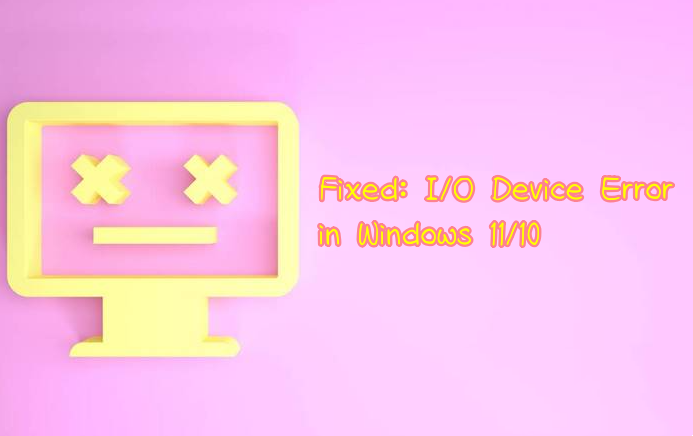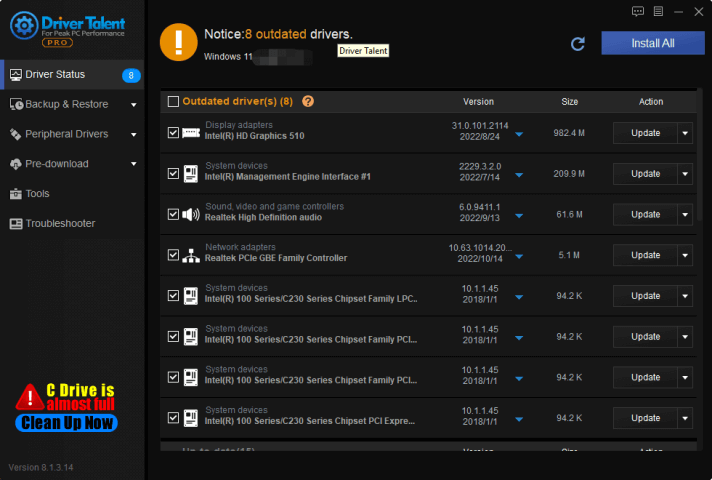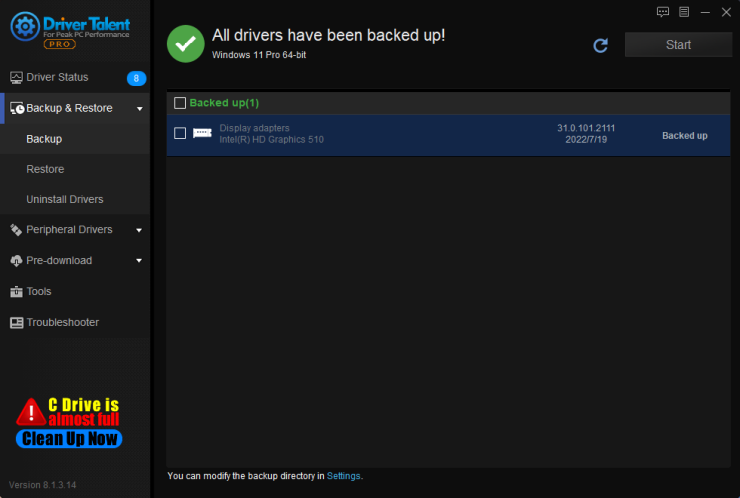Fixed: I/O Device Error in Windows 11/10
Apr. 17, 2023 / Updated by Renata to Windows Driver Solutions

External hard drivers are an essential part of our daily lives, especially for those who need to store large files or perform backups of important data. However, like any other piece of hardware, external hard drives are not invulnerable to errors, including the dreaded I/O device error. This error indicates that the hard drive is unable to read or write data, making it impossible to access the files stored on it. This issue can be caused by several reasons, ranging from driver issues to physical damage, but fortunately, there are several solutions you can try to fix the I/O device error on external hard drives in Windows 11/10.
Solution 1: Check the Cables and Connections
Solution 2: Update or Reinstall the Device Driver
Solution 3: Check and Repair the File System
Solution 4: Change the Drive Transfer Mode
Solution 1: Check the Cables and Connections
Before trying any other solution, it's important to ensure that the external hard drive is connected correctly to your computer. Check the USB cable for any damage, wear, or tear, and if possible, try another cable. Also, make sure that the cable is connected to a USB port that is working correctly, as malfunctioning ports can cause I/O device errors. Finally, check if the external hard drive has power and that it's turned on.
Solution 2: Update or Reinstall the Device Driver
Move1: Update Driver
In most cases, I/O device errors are caused by corrupted or outdated device drivers. Therefore, it's essential to ensure that your external hard drive's driver is up to date. It is highly recommended to download a driver updater----Driver Talent.
With the help of Driver Talent, you can update all drivers for only one click:

Move2:Reinstall Driver
If the updating drivers failed to fix the White Screen of Death error, please reinstall drivers.
Windows 10 and Windows 11 operating systems will automatically provide and download and install the corresponding driver when the computer is connected to a new device, but due to the residue of the old version driver, the new driver may not work normally. Therefore, it is necessary to uninstall the driver and download the driver again, so that the device can be used normally.
With the help of Driver Talent, you can back up the drivers before its files damaged and then restore drivers when it needed.
Besides, you can uninstall drivers and then install the same driver version as a method to reinstall drivers.

Solution 3: Check and Repair the File System
Another reason for I/O device error in external hard drives is a corrupted file system. Hard drives use a file system to organize and store data, and if the file system is damaged, it can cause data loss and errors. Windows has a built-in tool called Check Disk (CHKDSK) that detects and repairs file system errors. To use this tool, follow these steps:
1. Type cmd in the Windows search bar
2. Right-click on Command Prompt and choose Run as administrator.
3. In the Command Prompt, type chkdsk [drive letter]: /r and press Enter.
4. Windows will begin scanning and repairing the file system errors.
Note: If you receive a message stating that the drive is in use and cannot be checked, type Y and press Enter, and then restart your computer to run the scan at boot.
solution4: Change the Drive Transfer Mode
If the I/O device error issue still persists, even after using the above solutions, your external hard drive may have sustained physical damage, which is beyond repair.
Changing the drive transfer mode on a computer involves adjusting the way data is transferred between the hard drive and other hardware components in the computer. The transfer mode can be changed in a few simple steps, as outlined below.
Step 1: Open the Device Manager
The first step is to open the Device Manager. To do this, right-click on the Start menu and select "Device Manager."
Step 2: Find the Drive
Next, locate the hard drive you want to change the transfer mode for. It should be listed under the "Disk drives" category.
Step 3: Open Properties
Right-click on the drive and select "Properties."
Step 4: Change Transfer Mode
In the Properties window, select the "Advanced Settings" tab. Here, you should see options for the current transfer mode and the available transfer modes. Choose the transfer mode you want to use from the dropdown menu, and click "OK."
Step 5: Restart the Computer
After changing the transfer mode, you may need to restart your computer for the changes to take effect.
It is important to note that changing the transfer mode can have an impact on the performance of your computer. It is not recommended to make changes unless you are experiencing issues with data transfer speeds or other related problems. Additionally, you should be sure to back up any important data before making any changes to your hard drive settings.
Conclusion
External hard drive I/O device errors can be a pervasive and frustrating issue for users. However, the solutions above can help you resolve the problem and recover lost or damaged data. Remember always to keep a backup of your important data, whether its cloud storage or another external hard drive. Having a backup can save you valuable time and frustration in the long run.

|
ExplorerMax |

|
Driver Talent for Network Card | |
| Smart and advanced file explorer tool for Windows platforms | Download & Install Network Drivers without Internet Connection | |||
| 30-day Free Trial | Free Download |







